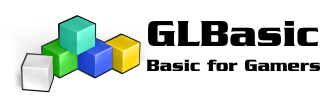MUSICVOLUME causes this compiler error:
*** Configuration: WINCE ***
precompiling:
GPC - GLBasic Precompiler V.2007.363 - 3D, NET
Wordcount:189 commands
compile+link:
/cygdrive/c/Users/User/AppData/Local/Temp/ccpgQHgt.o(.text+0x2a4):gpc_temp0.cpp: undefined reference to `ZN11__GLBASIC__11MUSICVOLUMEEf'
*** FATAL ERROR - Please post this output in the forum
*** Configuration: WINCE ***
precompiling:
GPC - GLBasic Precompiler V.2007.363 - 3D, NET
Wordcount:189 commands
compile+link:
/cygdrive/c/Users/User/AppData/Local/Temp/ccpgQHgt.o(.text+0x2a4):gpc_temp0.cpp: undefined reference to `ZN11__GLBASIC__11MUSICVOLUMEEf'
*** FATAL ERROR - Please post this output in the forum


 Could you provide any of the following in GLB that would work on any platform...
Could you provide any of the following in GLB that would work on any platform...
